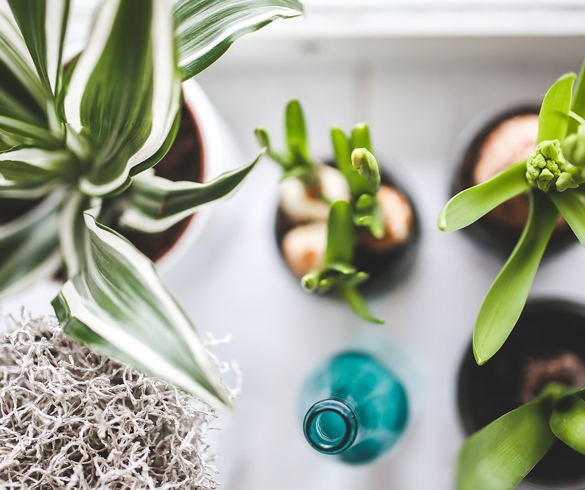
Gardening With Charlie – Houseplants Clean the Air
– The outdoor gardening season has ended in much of the country. Sure, there are still late fall chores of raking and composting leaves and protecting roses for winter, but unless you live in the warmer parts of Florida, California, Texas, and Arizona, the growing part of the gardening season has finished. This is the time of year my attention moves to my houseplants. Often neglected all summer for the more colorful and flamboyant perennial and annual flowers, houseplants are literally \”a breath of fresh air\” on cold, fall days. Not only do houseplants provide lush greenery indoors, many of them clean the air, too.
Stale Indoor Air
With concern about energy efficiency, modern houses are built as tight as possible. While these more efficient houses are great for using less energy, the air can easily become stale. Unfortunately, many common objects found in households give off chemicals that can be harmful to our health. For example, plastic grocery bags, paper towels, room deodorizers, and carpeting give off formaldehyde, which can cause eye, nose, and throat irritation; headaches; and allergic reactions. Oils, paints, plastics, rubber, and some detergents give off benzene, which can cause skin irritation, headaches, and drowsiness. Appliances, heaters, gas, and oil can give off carbon monoxide that can cause nausea, headaches, and dizziness. Research suggests indoor air can be 10 times more polluted than outdoor air. While we can\’t rid our houses of every object that emits potentially toxic fumes, we can clean up the air simply by growing houseplants.
Best Air-Cleansing Houseplants
For 25 years NASA researchers have been testing various houseplants for their ability to clean air of toxins. Their research has been aimed at creating a livable moon base, but the results are also applicable right here at home. They discovered a number of houseplants that remove the main three gas pollutants in homes: formaldehyde, benzene, and carbon monoxide. Plants take in these air pollutants when their pores (stomata) open. The air pollutants are translocated to the roots where they are broken down by plant and soil microbes. Not only are these houseplants good air purifiers, they are easy to grow indoors. In his book, \”How To Grow Fresh Air; 50 Houseplants that Purify Your Home or Office,\” (Penguin, 1997), former NASA scientist Bill Wolverton estimates you\’ll need two to three large houseplants (10- to 12-inch-diameter containers) to clean the air in a 100- to 150-square-foot room. If using fewer plants, it\’s best to place them within your personal breathing zone (6 to 8 square feet around you) where you normally sit or lie to get the full benefit.
Some of the best houseplants to grow based on their ability to easily grow indoors, remove toxins, and release moisture into the dry, indoor air as they respire are:
- Areca palm (Chrysalidocarpus lutescens)
- English ivy (Hedera helix)
- Rubber plant (Ficus robusta)
- Boston fern (Nephrolepis exaltata)
- Schefflera (Brassaia actinophylla)
- Bamboo palm (Chamaedorea sefritzii)
Charlie Nardozzi, a nationally recognized garden writer, book author, speaker and radio and television personality, has appeared on HGTV, PBS and Discovery Channel television networks. He is the senior horticulturist and spokesperson for the National Gardening Association (www.garden.org) and Chief Gardening Officer for the Hilton Garden Inn.
Source
National Gardening Association






















